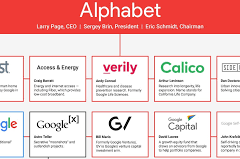With the Dreamforce conference just a few weeks away, AI is set to be a central theme once again. This week, Salesforce offered a preview of what to expect in September with the release of its “Trends in AI for CRM” report. This report consolidates findings from several Salesforce research studies conducted from February last year to April this year.
The report’s executive summary highlights four key insights:
- Trust is Crucial: As AI becomes more integrated into daily life, consumers are increasingly focused on trust and transparency. Seventy-four percent of people are concerned about unethical AI use, and 63% worry about biases in AI.
- Evaluating Data Foundations: AI relies heavily on quality data. The rise of AI is prompting companies to assess the quality, timeliness, and security of their data. Eighty-six percent of technical decision-makers agree that AI’s effectiveness depends on the quality of its data inputs.
- AI Use Cases are Expanding: Teams are exploring various applications of AI, from content creation to process optimization. Ninety-two percent of sales, service, marketing, and commerce teams are considering AI investments.
- Evolving Workplace Skills and Policies: Employees recognize AI’s potential to transform their roles, but many employers are lagging in providing clear policies. Fifty-six percent of desk workers believe generative AI will impact their roles, yet only 21% report having clear company policies on its use.
The Fear of Missing Out (FOMO)
An intriguing statistic from Salesforce’s “State of Data and Analytics” report reveals that 77% of business leaders feel a fear of missing out on generative AI. This concern is particularly pronounced among marketers (88%), followed by sales executives (78%) and customer service professionals (73%).
Given the continued hype around generative AI, these numbers are likely still relevant or even higher as of July 2024. As Salesforce AI CEO Clara Shih puts it:
“The majority of business executives fear they’re missing out on AI’s benefits, and it’s a well-founded concern. Today’s technology world is reminiscent of 1998 for the Internet—full of opportunities but also hype.”
Shih adds:
“How do we separate the signal from the noise and identify high-impact enterprise use cases?”
The Quest for ROI and Value
The surge of hype around generative AI over the past 18 months has led to high expectations. While Salesforce has been more responsible in managing user expectations, many executives view generative AI as a cure-all. However, this perspective can be problematic, as “silver bullets” often miss their mark.
Recent tech sector developments reflect a shift toward a longer-term view of AI’s impact. Meta’s share price fell when Mark Zuckerberg emphasized AI as a multi-year project, and Alphabet’s Sundar Pichai faced tough questions from Wall Street about the need for continued investment.
State of AI
Shih notes a growing impatience with the time required to realize AI’s value:
“It’s been over 18 months since ChatGPT sparked excitement about AI in business. Many companies are still grappling with building or buying solutions that are not overly siloed and can be customized. The challenge is finding a balance between quick implementation and configurability.”
She adds:
“The initial belief was that companies could just integrate ChatGPT and see instant transformation. However, there are security risks and practical challenges. For LLMs to be effective, they need contextual data about users and customers.”
Conclusion: A Return to the Future
Shih likens the current AI landscape to the late 90s Internet boom, noting:
“It’s similar to the late 90s when people questioned if the Internet was overhyped. While some investments will not pan out, the transformative potential of successful use cases is enormous. Just as with the Internet, discovering the truly valuable applications of AI may require experimentation and time. We are very much in the 1998 moment for AI now.”













